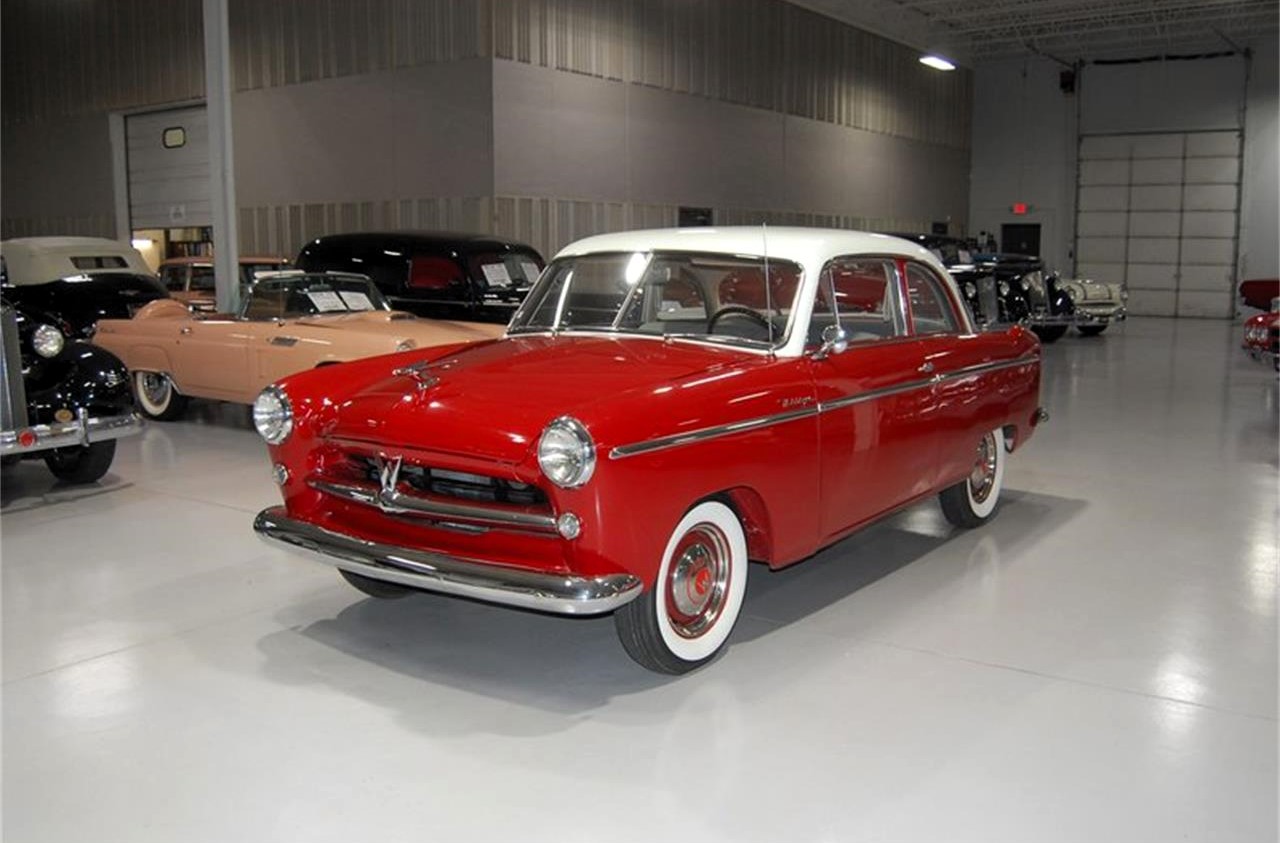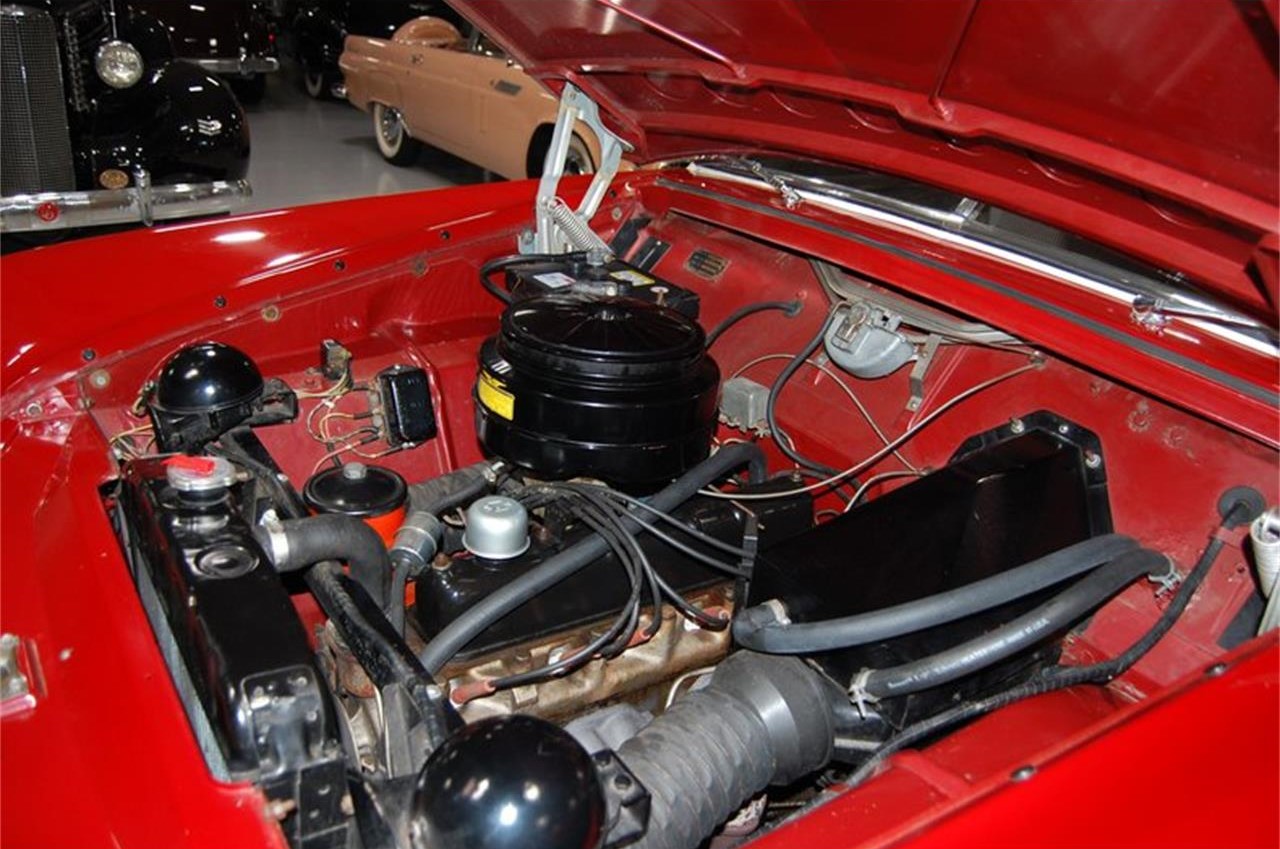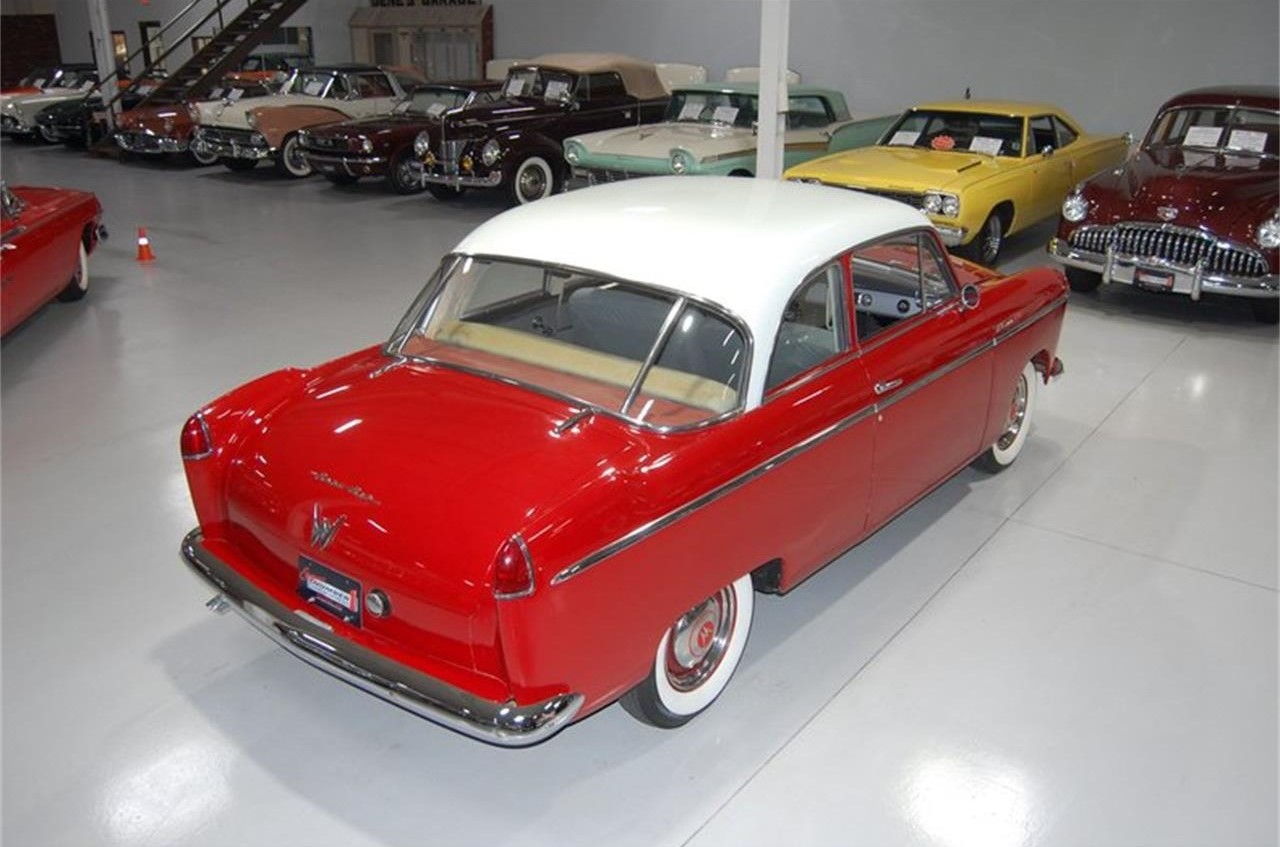Chrysler fans love to brag about how, in 1960, all Mopars save Imperial featured unit-body construction. However, Chrysler was not the first American car company to feature this form of construction. One of the early adopters is our Pick of the Day, a 1952 Willys Aero-Ace two-door sedan for sale on ClassicCars.com by a dealer in Rogers, Minnesota. (Click the link to view the listing)

Willys had been through a lot throughout its history, producing several classes of cars until the Great Depression forced its hand and the folks high in the offices of Toledo decided to produce an economical car. These cars were produced through the 1942 model year until the war effort interrupted automotive production. When consumer production resumed, Willys pushed the “Peace Jeep,” then offered Jeep trucks and wagons in 1947 and the Jeepster in 1948. However, 1952 brought a return to passenger car production with the Aero Willys.

Both the Willys Aero-Wing and Aero-Ace were two-door sedans with “Willys Aero-Frame construction” that “eliminated needless weight and produces a car structure that is rigid and strong, exceptionally quiet and long-lasting.” The Aero Willys was powered by a 161cid F-head Hurricane 6 with 90 horsepower, which gave it a power-to-weight ratio highest in the industry. In fact, despite its diminutive 108-inch wheelbase, it featured many interior measurements that equaled or surpassed its conventionally sized competition from the Big Three and Independents. Willys touted visibility, economy, comfort, and construction in ads of the period yet, by 1955, Willys decided to get out of the mainstream passenger car industry and focus on Jeeps. With some restyling from industrialist Brooks Stevens, Willys sent the tooling to Brazil for more than a decade of production starting in 1960.

This 1952 Willys Aero-Ace was the top-of-the-line for that introductory year. Unlike its cheaper Aero-Wing sibling, the Aero-Ace featured a wrap-around rear window. The Hurricane 6 is backed by a three-speed manual with overdrive, thereby giving the Willys four forward gears, with one a nod to economy. “The exterior has been refinished in a beautiful two-tone paint scheme consisting of Cherokee Red body with White Top,” says the seller. “The chrome and brightwork around the exterior of this Willys has a great look.” Inside, the front and rear benches are upholstered in two-tone gray cloth.

Alas, the Aero Willys didn’t sell well, achieving only 31,000 and change. Pricing was a factor, as it was marginally more expensive than the Big Three’s larger, low-priced vehicles but, for $24,995, pricing doesn’t seem to be such an issue because this is a unique, affordable collectible that gives up nothing to the competition.
To view this listing on ClassicCars.com, see Pick of the Day.






The Aero Willys was years ahead of it’s time. In a comparison of all American cars, the Aero came in at second place, behind Cadillac!
I think you mean 2499.50
The Aero Willys was produced in Brazil for many years after production stopped in the U.S. Willys developed the Aero Willys for Brazil and later other models such as the Itamaraty etc.
When it comes to “early adapters” of unitized construction, on a mass scale, in the U.S. auto industry, don’t forget that the 1941 Nash 600 had unitized construction over a decade earlier. This then spread to the entire Nash line with the introduction of the 1949 “Bath tub” Nashes, and also included the compact Nash Ramblers. The 1948 Tucker Torpedo was also unitized construction, although they were put out of business before they achieved mass production levels. The famous “step-down” design of the 1948 through 1954 Hudson automobiles were also unitized construction. When Nash and Hudson merged, forming AMC, the new “right sized” 1956 AMC Rambler line was all unitized construction. All told, it was the American independent auto manufacturers that led in domestic production of unitized cars, the “Big Three” caught up later…starting around 1960.
We didn’t forget, but it wasn’t part of the story.